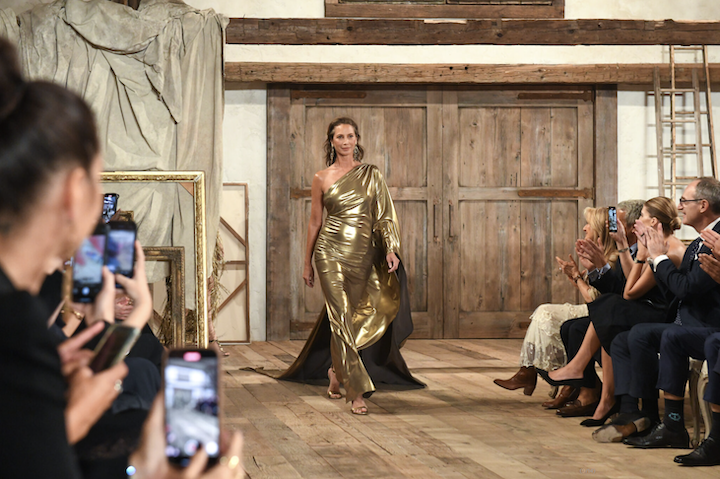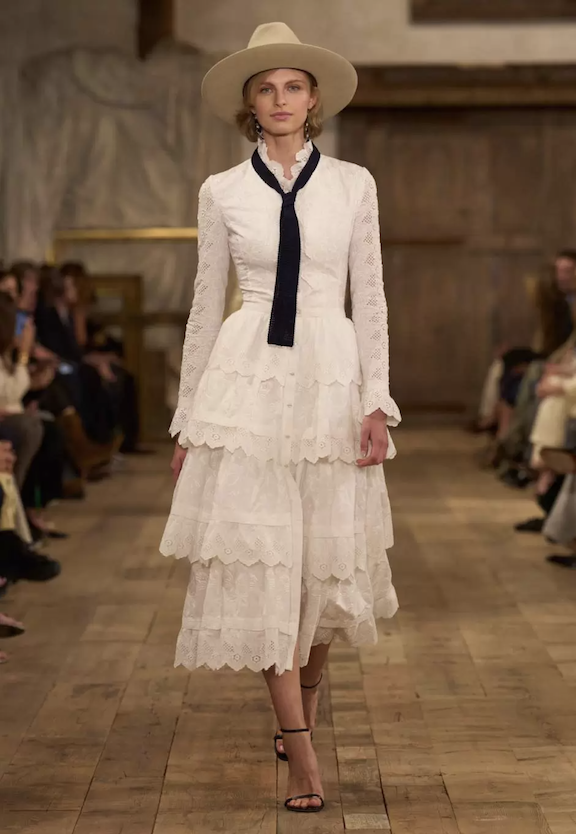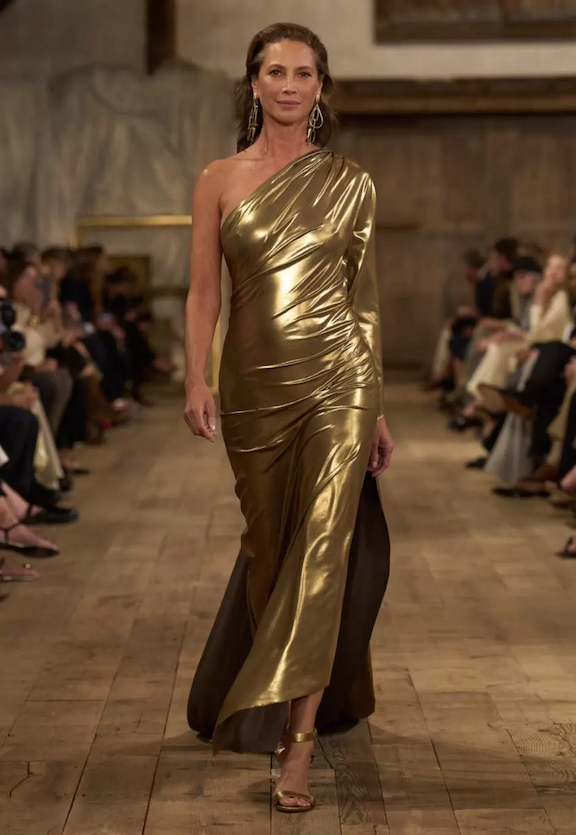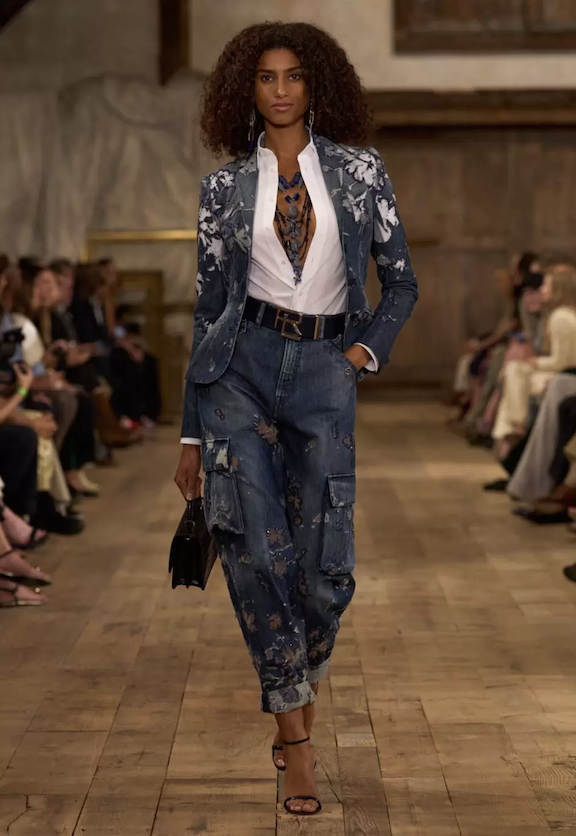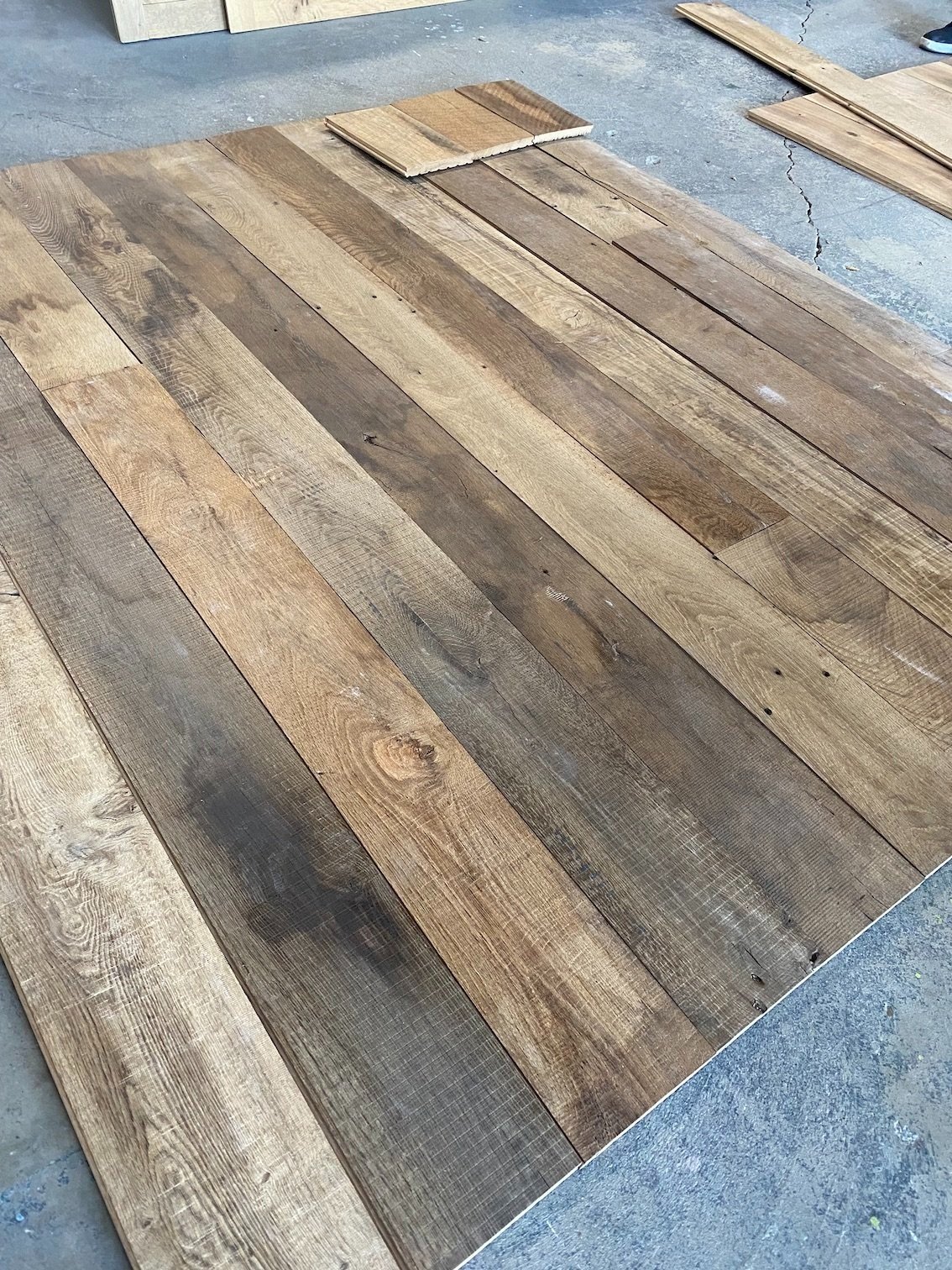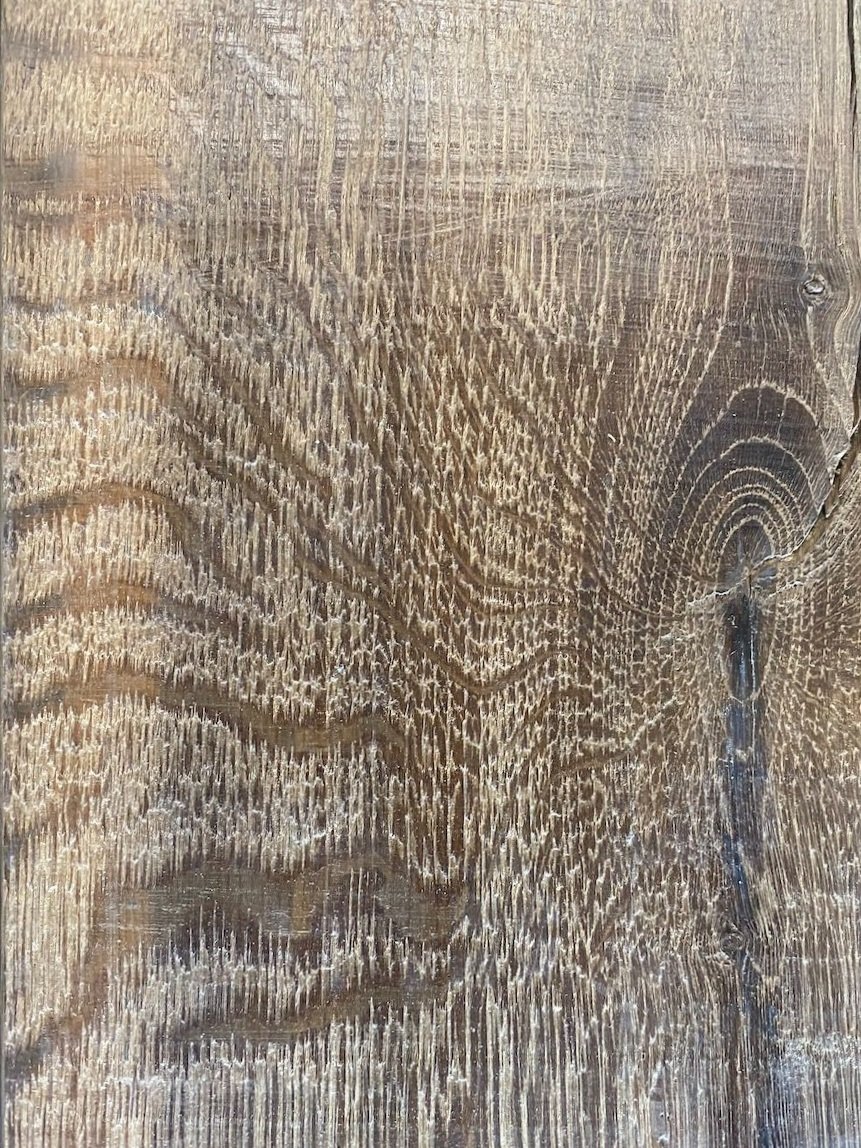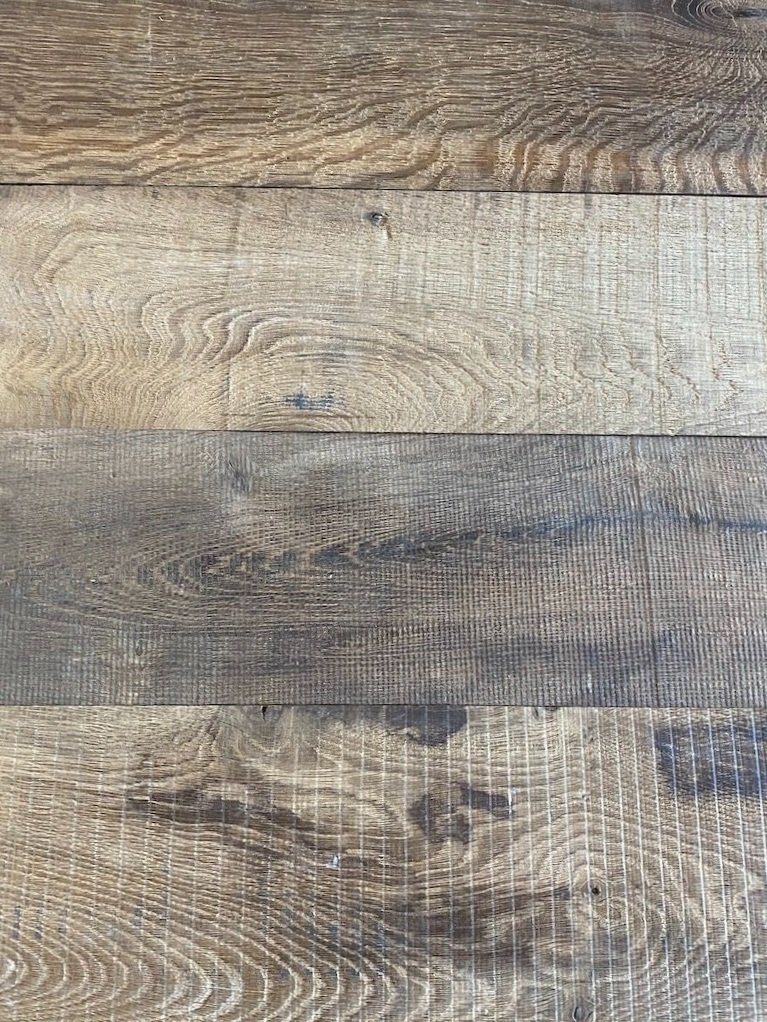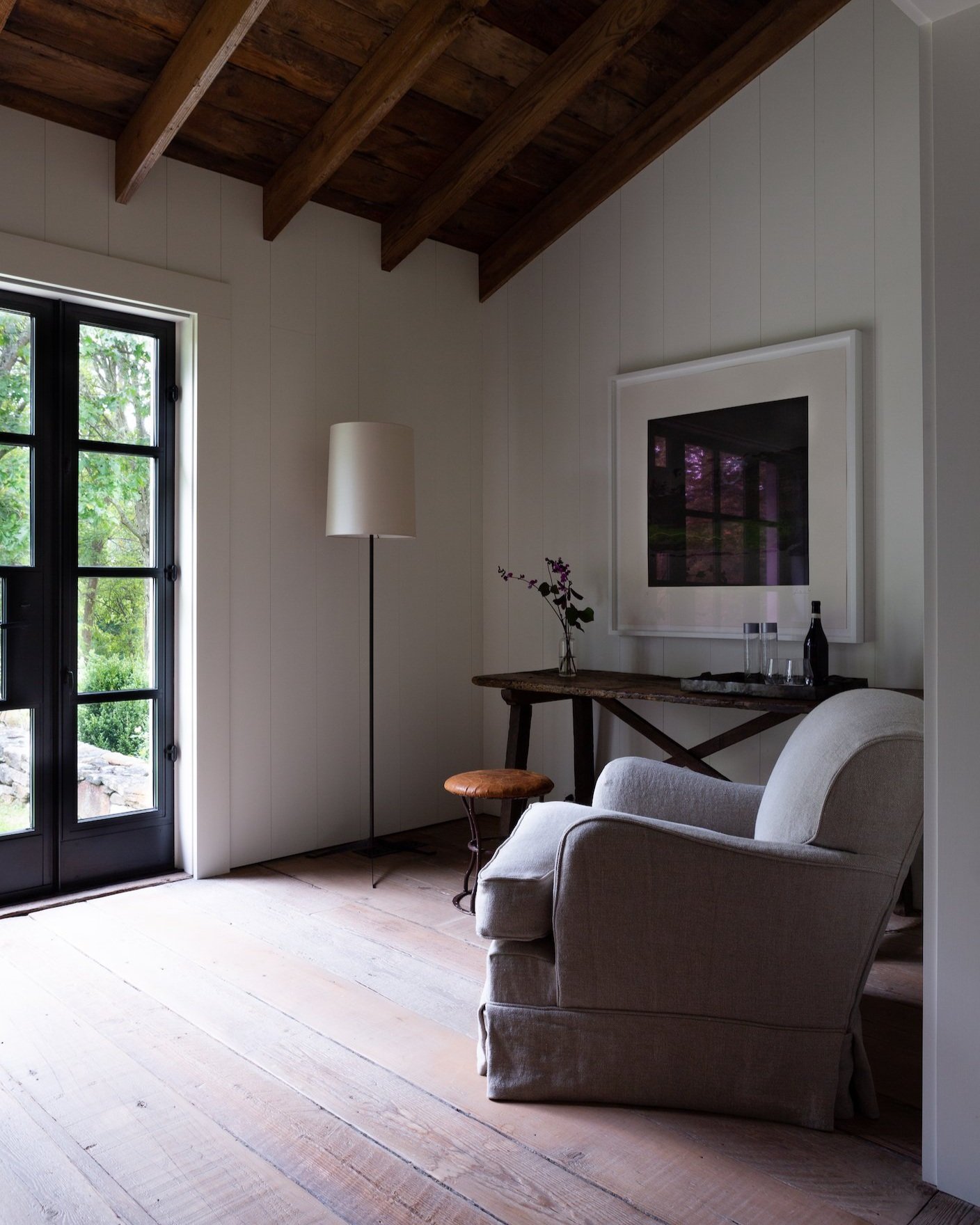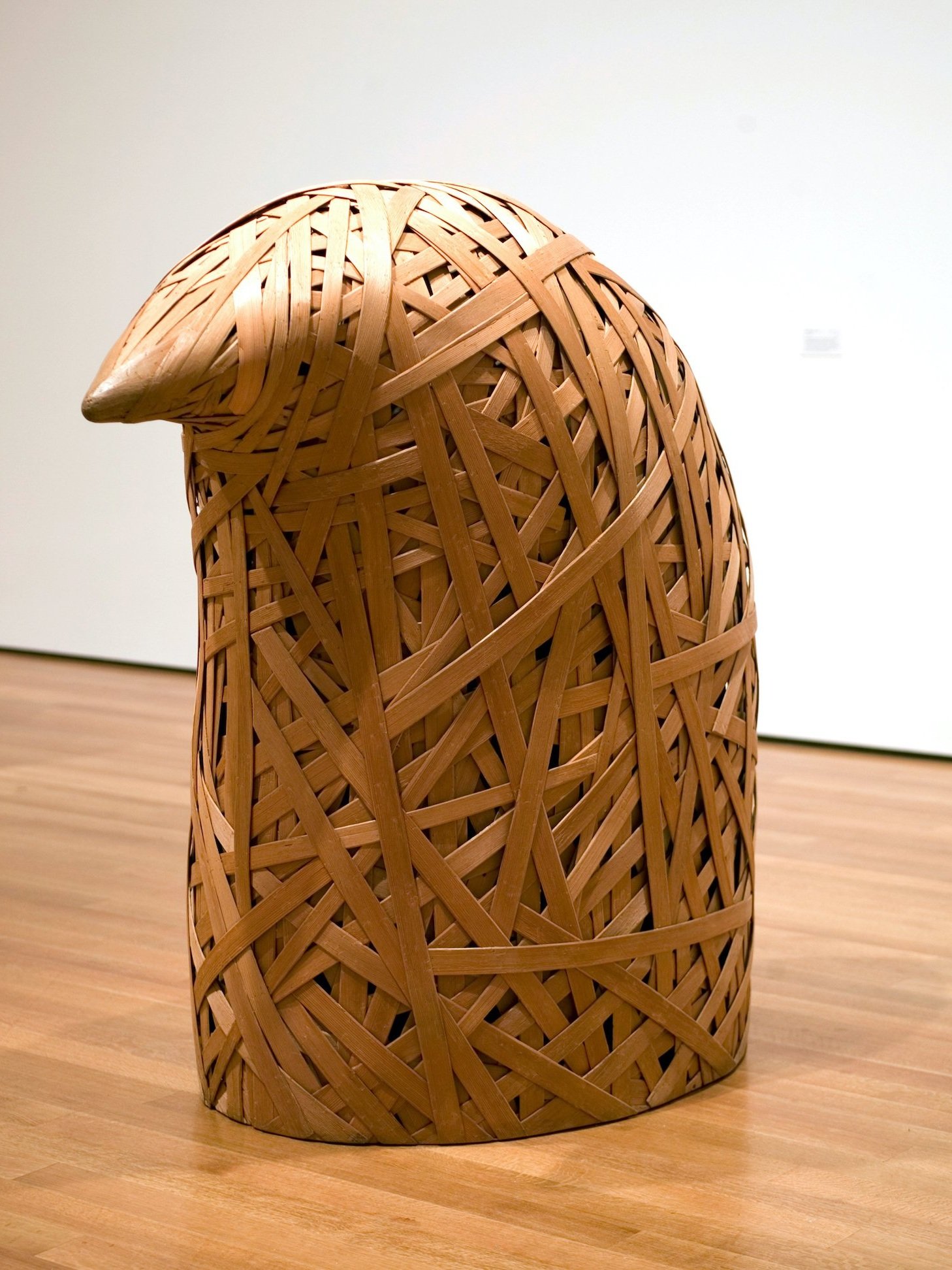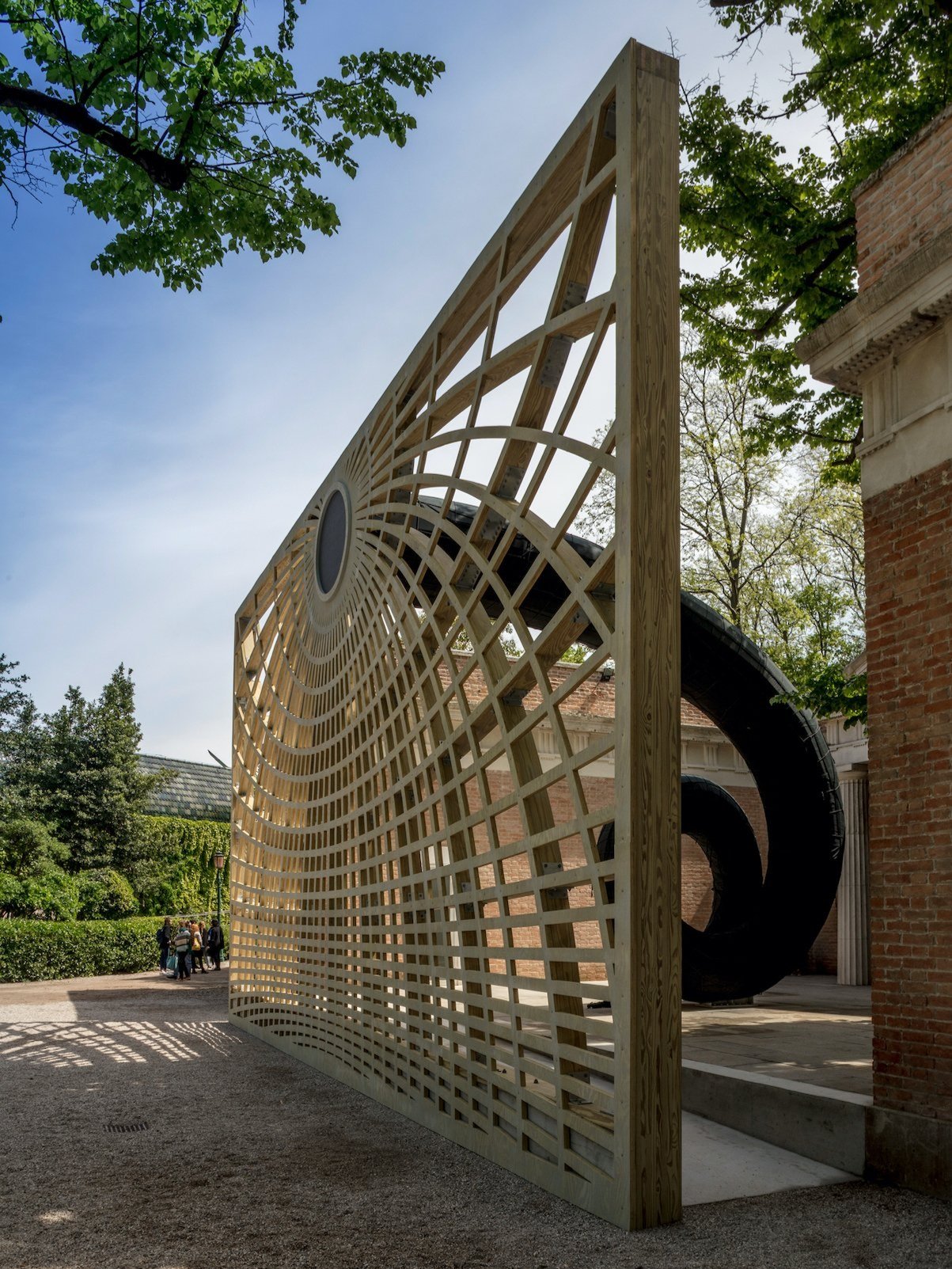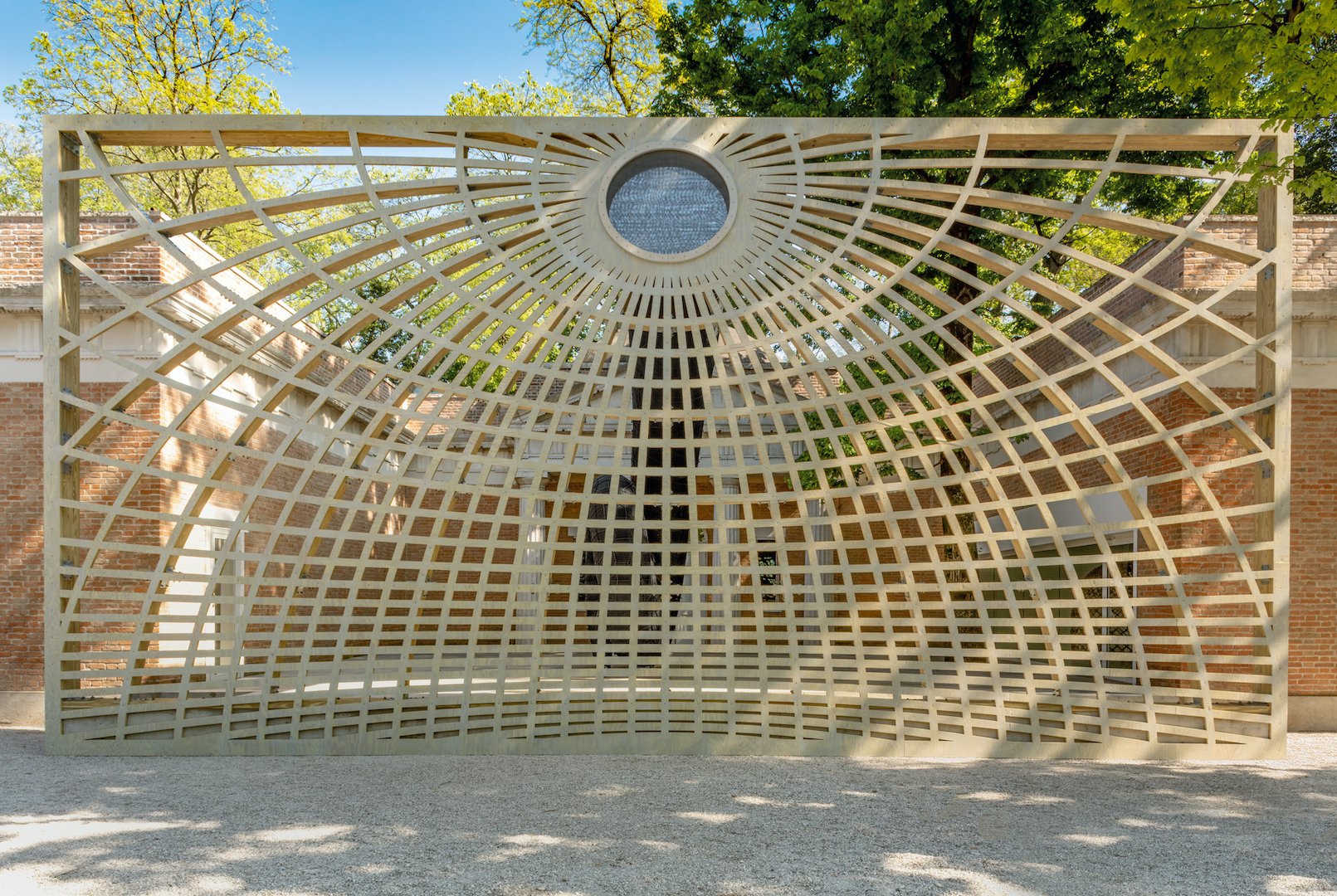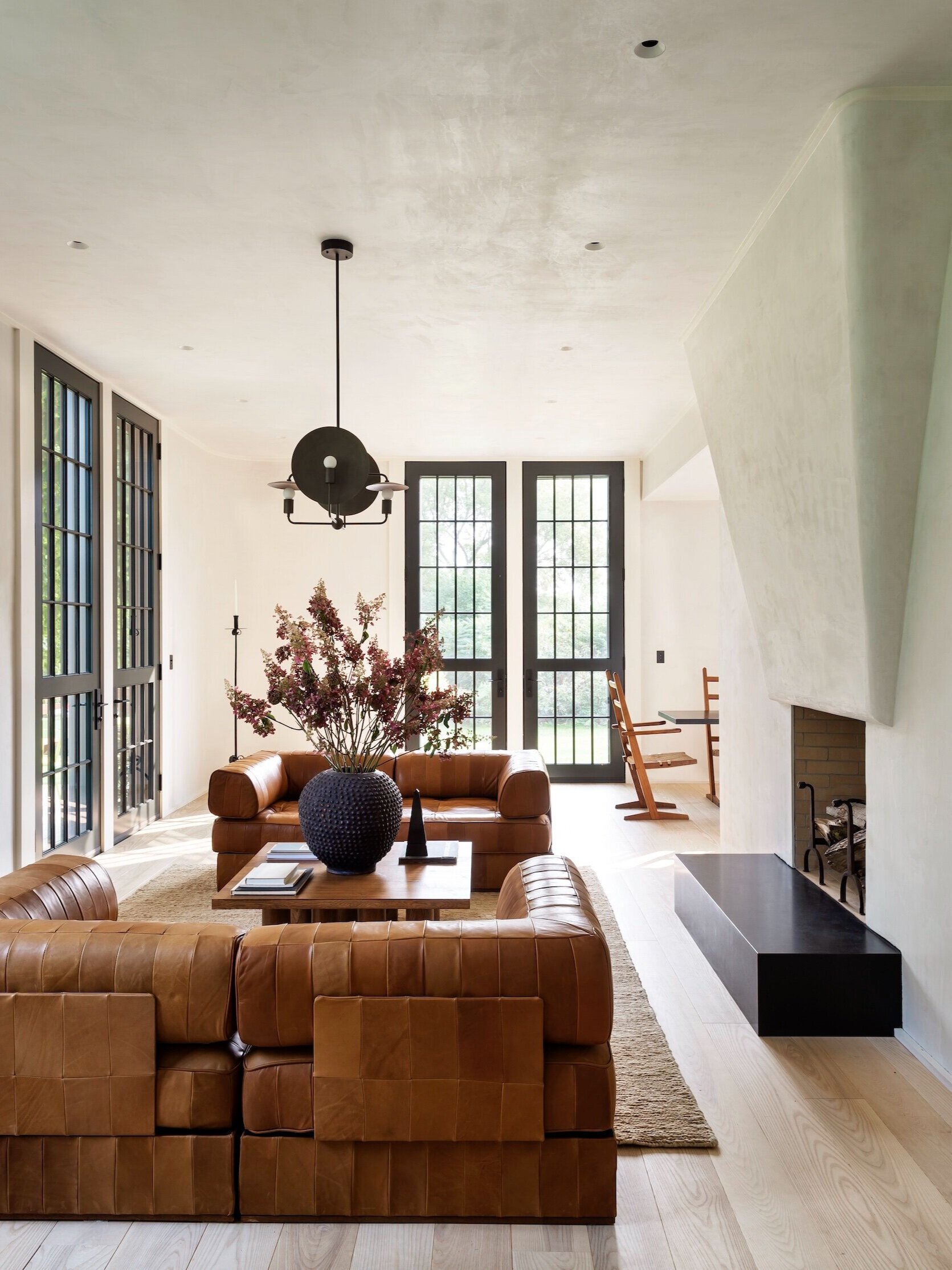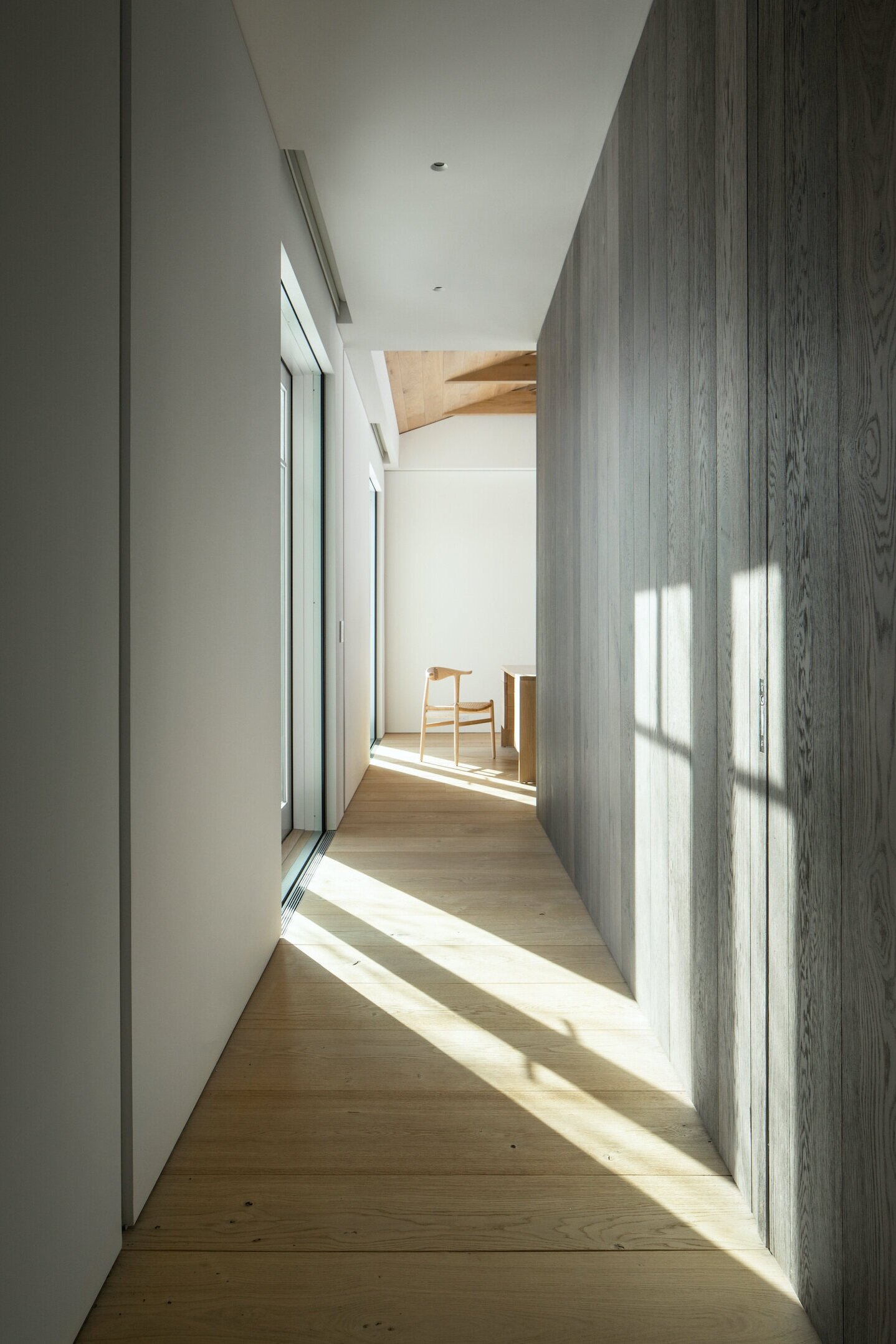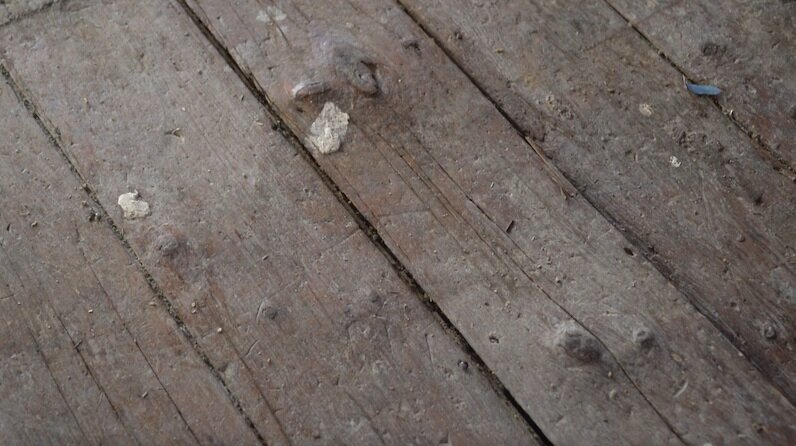Earlier this year, we identified an architectural treasure not far from the Pine Plains Mill: the Federal Style Oliver Bronson House.
Originally built in 1811 as a private residence and later used as a reform school for girls, the Bronson house has sadly fallen into disrepair. But with permission from Historic Hudson, we assembled a team that included our fabricators, installers, photographers, and an inspired stylist. In all, eighteen people over three days helped recreate a world in which The Hudson Company’s flooring—some of it as old or older than the house itself—could exist in a setting full of character and architectural detail.
Special thanks to our friends Colin King, Andrea Gentl, Martin Hyers, and Dani Case.
Building Ralph Lauren's World
Courtesy of Ralph Lauren
Even people well outside the orbit of Fashion Week know that Ralph Lauren’s designs are more than the sum of their parts. Blazers, jeans, and leather loafers are all covetable items, but what Lauren does better than almost any designer in the world is bring shoppers and observers alike into a fully realized world of partly-imagined Americana. In Ralph’s landscape, elements of cowboy culture, ranch houses and alpine holidays mix freely with the trappings of elite sporting events, lending the humblest knit polo shirt an air of aristocratic ruggedness.
How does he do this? One of the most tangible ways—apart from his cinematic ad campaigns—is through the physical settings he creates for his shows. And this year, The Hudson Company was part of the magic: Christy Turlington herself strode down a catwalk made from our own Brown Board in Lauren’s Spring 2024 Show in NY Fashion Week.
Courtesy of Ralph Lauren
This event marked a welcome return for Lauren, who according to Vogue had not been part of New York Fashion Week since before the pandemic. Loyal fans including Sheryl Crow, Jennifer Lopez, Julianne Moore and Diane Keaton flocked to the Brooklyn Navy Yard where they sat on an assemblage of charmingly weathered white chairs. Inside a barn-like structure with soaring beamed ceilings, Lauren had created an interior for the event modeled on his own Colorado home. Leather upholstery, wool blankets, and log-lined walls transported guests to Lauren-land as models presented gold-fringed caftans, silk gowns awash in vivid plaids, and embellished denim.
The New York Times characterized the aesthetic “upscale saloon-themed.” After the show, guests moved into a candle-lit space behind a barn door where dinner awaited and glass chandeliers perched above sumptuous tables. This particular mix of weathered, antique materials and thoughtful luxury is very familiar to us at The Hudson Company, and we were delighted to play a part in helping to construct this singular New York Fashion Week evening.
Courtesy of Ralph Lauren
Courtesy of Ralph Lauren
Courtesy of Ralph Lauren
Antique French Oak
French vintners coined the term terroir to describe the earthy mix of climate, soil, and weather conditions that make wine taste the way it does. There’s no equivalent word to describe lumber, but the concept of terroir applies: every piece of wood on earth originally came from a tree, and that tree grew on a unique patch of soil in its particular corner of the world. The wind, weather, soil and sun make it what it is. That’s why this collection of Antique French Oak is so special, and couldn’t be replicated in any other place.
Sourced last autumn, this wood was salvaged from floorboards in farmhouses east of Paris in the French towns of Metz, Nancy, Dijon, as well as Lorraine and Bougogne in the region of Est. Dating from the 17th and 18th centuries, thesehouses were sturdily built and well loved. You wouldn’t find the kind of high-polish case furniture favored by the various Louis here; instead you’d be enchanted by the rustic simplicity and unspoiled beauty of the architecture and the surrounding countryside. Picture charmingly idiosyncratic paint colors, pictures and lighting fixtures just slightly askew, clean and fresh-smelling tea towels, and the promise of fresh bread each morning. So much history and daily life unfolded in these houses, and some pieces of it are coming to America.
The Hudson Company’s New Showroom with FAIR Opens May 11th, 2022
The Hudson Company and FAIR are pleased to announce their new shared showroom at 200 Lex, the New York Design Center. Guests are invited to an open house event on Wednesday, May 11th from 3—7 PM.
FAIR and The Hudson Company have a long history of creative collaboration. In 2014, Brad Ford established Field+Supply, an earthy design fair held twice a year in the Hudson Valley featuring furniture, lighting, and accessories. The Hudson Company has participated in Field+Supply for many years, welcoming visitors to explore an evolving collection of sustainably salvaged lumber, antique beams, and custom flooring.
Founder Jamie Hammel realized that Brad Ford was a kindred aesthetic spirit, and in 2016 asked him to design The Hudson Company’s Manhattan showroom. In 2018, Hammel and Ford teamed up again when Ford designed The Hudson Company’s Ridgefield, Connecticut space. The pair also curated an exhibition called "Sitting Still" for NYCxDesign, which celebrated the craft of woodwork through the lens of the humble side chair. This new space at 200 Lex is just the latest in a long series of thoughtful collaborations between Ford and The Hudson Company, with fine materials and skillful design at its center. Visitors will recognize a familiar aesthetic, and delight in encountering new designs, forms, and inspiration.
200 Lexington Avenue
Suite #1601
NY, NY 10016
Tel: (212) 391-8202
info@thehudsonco.com
STONEWOOD FARM
In 2000, Ken Holzberg and Tom Kopfensteiner bought a piece of land in the Hudson Valley. It was densely wooded, and there were no buildings on the property, but there was a tantalizing clue that suggested a lively past: a thicket of old apple trees. Though it was now overgrown, it had once thrived, and the pair were convinced it could thrive again. It would take two decades and countless hours of hard work, but eventually Ken and Tom cleared the property and transformed it into Stonewood Farm, a certified organic vegetable farm with a mission. And today, the structures they built on the property look as though they’ve always been here.
Ken studied the landscape throughout the region and understood that builders in centuries past took advantage of the land's natural features and used what was at hand—local stone and trees—to build farmhouses and outbuildings. He chose vernacular materials to anchor the buildings in their surroundings: wood clapboards and shiplap for siding, wood shingles and standing seam metal for roofing, and stone and brick for foundations. He came to The Hudson Company for antique wood, which gave the new structures a sense of quality and timelessness. We supplied beams, flooring, and antique lumber to help Ken and Tom realize their vision.
Today, Stonewood Farm seems as though it has existed for ages, and it’s a culinary and cultural hub in the local community. Their mission is to use this land to support the next generation of farmers. They even have an apprenticeship program for young food growers. They also started a food pantry in town five years ago, and recently launched a non-profit organization that hosts on-farm dinners to support their community outreach. From the ground up, Stonewood Farm was built to nurture the land on which it sits.
Martin Puryear: Ancient Forms, New Ideas
Martin Puryear, Ladder for Booker T. Washington, 1996. Ash, maple. 432 x 22 3/4 (narrowing to 1 1/4” at top) x 3 inches. Collection of Modern Art Museum Fort Worth, Gift of Ruth Carter Stevenson, by Exchange. ©Martin Puryear, Courtesy Matthew Marks Gallery.
Suppose you met a person and learned that they had studied joinery, boat building, wood carving, archery, and falconry in their youth. (Yes, falconry.) What might their profession be? “Medieval journeyman” would be a good guess, but this person is alive, well, and busy working in the 21st century. If your second guess was “MacArthur Fellow and world-renowned sculptor,” you’d be right: the answer is Martin Puryear.
Born in Washington DC in 1941, Puryear is one of the most prominent artists of his generation, yet his work stands apart from that of most of his peers for its insistence on materiality, and in particular, a reverence for carpentry and woodwork. Many artists of his generation—Jenny Holzer, Martha Rosler, or Bruce Nauman, to name a few, create works that are characterized as “conceptual.” This usually means that a work of art might comprise the passage of time in a particular setting, or a social encounter inside a gallery space, rather than a discrete object like a painting on a wall. Puryear isn’t usually described as a conceptual artist, but it’s fair to say that his painstaking, labor-intensive practice is so unusual in contemporary art that he’s made an ancient concept new again: craftsmanship.
Martin Puryear, Old Mole, 1985. red cedar. 61 x 61 x 32 inches. Collection: Philadelphia Museum of Art. Photo: Richard Barnes. ©Martin Puryear, Courtesy Matthew Marks Gallery.
Martin Puryear, Swallowed Sun (Monstrance and Volute), 2019. Southern yellow pine, steel, polyester, canvas, rope. 22 ft. 8in. x 44 ft. x 24 ft. 3 in. U. S. Pavilion, 2019 Venice Biennale. Photo: Joshua White. ©Martin Puryear, Courtesy Matthew Marks Gallery.
Puryear graduated from Catholic University of America in Washington, DC, where he studied art, but only after switching his major from biology—an interest he has never entirely abandoned. He traveled to Sierra Leone as a Peace Corps volunteer teaching French, English, art, and science from 1964-66. He famously didn’t bring a camera there, instead making copious use of pens and sketchbooks, even scrap paper as needed, to document what he saw. He studied the local animals and plants, and observed the technique of the craftspeople he met. In 1967 he embarked on a backpacking adventure in northern Sweden, later studying at the Royal Swedish Academy of Arts for two years and becoming skilled in traditional Scandinavian craft practices—one such technique, interweaving thin strips of wood would continue to appear in his sculpture for decades. He returned to the United States to pursue an MFA at Yale University, and began teaching while developing his studio practice.
He was decidedly out of fashion: while Minimalism ruled the artworld, Puryear’s interest in hand-fabrication and traditional skills of carpenters, coopers, and joiners never wavered. He taught at Fisk University in Nashville, the University of Maryland at College Park, and then moved to Chicago, to teach at the University of Illinois in 1978. Around this time, he became fascinated by boatbuilding, and began creating massive outdoor installations such as “Box and Pole” at Artpark in Lewiston, New York. He spent time in Japan in the 1980s on a Guggenheim Fellowship to learn more about traditional Japanese carpentry and garden design. He established a studio in the Hudson Valley in the early 1990s, and largely retired from teaching to focus on his practice.
Martin Puryear, Ladder for Booker T. Washington, 1996. Ash, maple. 432 x 22 3/4 (narrowing to 1 1/4” at top) x 3 inches. Collection of Modern Art Museum Fort Worth, Gift of Ruth Carter Stevenson, by Exchange. ©Martin Puryear, Courtesy Matthew Marks Gallery.
Around this time, he created a monumental work called “Ladder for Booker T. Washington,” which comprises a curvy ladder made from maple and ash saplings that stands 36 feet tall, narrowing at the top to give viewers a sense of perspective. Here, Puryear’s signature combination of quotidian tool and deep symbolism is on full display. In an interview with the PBS series Art21, Puryear explains that the piece—which only refers to its namesake in the title—telegraphs a sense of arduous and painstaking process through its tapered form. Washington, the orator, educator and Civil Rights leader who combated the injustices of Jim Crow in the late 19th and early 20th centuries, believed in doing the best one could within the circumstances of his times. “Booker T. Washington was someone who made enormous contacts with people in power and had enormous influence,” Puryear told Art21, “but he was what you would call a gradualist. And so, it really is a question of the view from where you start and the end, the goal.” An unassuming, hand-crafted ladder that looks taller than it really is turns out to be a perfect artistic gesture for a figure who made enormous progress in a long struggle that still continues.
Martin Puryear, Swallowed Sun (Monstrance and Volute), 2019. Southern yellow pine, steel, polyester, canvas, rope. 22 ft. 8in. x 44 ft. x 24 ft. 3 in. U. S. Pavilion, 2019 Venice Biennale. Photo: Joshua White. ©Martin Puryear, Courtesy Matthew Marks Gallery.
Now just over 80, Puryear has remained active in the contemporary art world, and just two years ago he was selected to represent the United States at the 58th Venice Biennale. His installation there explored the state of the American Experiment through physical form. He created a site-specific work for the exhibition, in collaboration with Tod Williams Billie Tsien Architects. The piece titled “Swallowed Sun (Monstrance and Volute)” takes the form of an enormous wooden screen with a pattern of intersecting arcs made from glued-laminated yellow pine, which can be read either as a space divider or as the flattened perspective of a person looking up at the inside of a dome. And though it’s clearly a nod to both Venice’s and his own Catholic background, it also refers to the geometry of the dome inside the United States Pavilion there, which is modeled on that of Thomas Jefferson’s Monticello. Though still widely revered, in the past few years especially, Thomas Jefferson’s legacy is as contested as it ever has been.
As in “Ladder for Booker T. Washington,” the wonder of Puryear’s artistry is in his unique ability to change our perspective on tradition. As a master craftsman, Puryear is no mere assemblage artist, placing objects in proximity for rhetorical effect. He makes things from raw materials, gives them a form that’s rooted in a shared experience or a commonplace object, then twists that reality a bit through perspective, a quirky proportion, or a bit of unexpected translucency, jolting us into a new kind of comprehension.
Martin Puryear, Swallowed Sun (Monstrance and Volute), 2019. Southern yellow pine, steel, polyester, canvas, rope. 22 ft. 8in. x 44 ft. x 24 ft. 3 in. U. S. Pavilion, 2019 Venice Biennale. Photo: Joshua White. ©Martin Puryear, Courtesy Matthew Marks Gallery.
WOODEN BOATWORKS
Reclaimed wood isn’t just for houses: some of the antique lumber we salvage finds its way to the workshop of Wooden Boatworks in Greenport, Long Island, where it plays a role in making classic wooden boats shipshape. Their team builds, maintains, and restores vintage boats using the traditional tools and techniques of shipwrighting. In this short film, Wooden Boatworks partner and expert sailor Steve Lubitz explains that many of the antique boats they work on come from the “golden age of yachting,” that is, the late 1800’s through the 1940s. For certain restoration projects, the team might need rare wood that’s difficult to find, such as mahogany for a boat’s interior. The Hudson Company can supply the kind of lumber “that doesn’t exist anymore,” says Steve, and can only be sourced through careful salvaging. Boats are heirlooms like any other, and carry as much personal and family history as a home.
New Life for a Hudson Valley Victorian
When David Ren bought Twin Bridges, his 1860’s Victorian mansion in New York’s Hudson Valley, it had seen better days. Weather, time, foreclosure, and even animals had taken their toll, and there was only one bathroom in the house that worked. An extension that had previously housed a 19th century kitchen was unsalvageable, which presented Ren and the team at Workstead with an intriguing challenge: design and build a new volume in its place that was both contemporary and contextual. Inspired by the quirky glamour of the Eastlake style home’s original bones, Workstead created a streamlined, two-story pavilion that echoes—but doesn’t mimic—the original. Where the front part of the house is painted ivory, its form animated by lots of crisp Victorian angles, the back part is curved like an Art Deco cruise ship, and its exterior is charred black.
Ren and Workstead had collaborated before: the firm helped give his Chelsea condo its distinctive character, and helped renovate his historic Charleston carriage house, which dates from the 1850s. There are elements of Workstead’s multifaceted practice to be found throughout Twin Bridges: there’s the architecture itself, the interior design, and the lighting, which includes unique fixtures like the eye-catching Orbit chandelier, which floats above a Nathan Lindberg cocktail table.
A color palette of jewel tones, such as Farrow & Ball’s Inchyra Blue, evokes the spirit of William Morris’s floral wallpaper, but instead of fussy, it feels relaxed and sophisticated. To complement the rich hues of the paint, furniture and textiles, there’s custom mahogany millwork restored to its original splendor, and The Hudson Company provided Bare, Ash flooring—a wood that has historically been used for building horse-drawn carriages, weapons, and even sporting equipment. The carriage trade may be a thing of the past in the Hudson Valley, but happily there’s still plenty of enthusiasm for the eccentricity and charm of Victorian high style.
Inspired by Vernacular Architecture and Natural Vistas in Jackson Hole
In Jackson Hole, Wyoming, the vernacular architecture and the natural landscape are all of a piece: rustic barns from the late 19th century have gently sloped roofs that echo the forms of the majestic mountains surrounding them. The town sits in a valley tucked between the Teton and Gros Ventre mountain ranges. For architects Brian Messana and Toby O'Rorke, designing a house on Junegrass Road meant taking each spectacular vantage point into consideration so they could capture the views their clients loved best.
Like the landscape, which offers beauty in every direction, Jackson Hole itself is “365,” Messana says, noting that there are outdoor pursuits for all seasons here: skiing, hiking, fishing, and mountain climbing, to name just a few. So the house isn’t a ski lodge per se, but a year-round retreat that fits into a dynamic landscape that changes throughout the year. To contextualize the house, they chose cedar siding for the exterior to evoke the look of the 19th and early 20th century ranch homes that dot the area. But there are distinctly modern touches: the house comprises four volumes which are connected by glass walkways. Different parts of the home are clad in stone or stained cedar, mixing a palette of traditional and unexpected materials.
To bring a natural palette inside, the team chose materials that evince a sense of warmth. The Hudson Company provided Ditch Plains French Oak for the floors, which, according to Messana, captures the look and feel of wood in its natural setting thanks to its dimensions: 13.5” wide and up to 16 feet long. (“It looks like a tree,” he explains.) As one of the largest surfaces inside any home, he says, floors have a great impact on the whole interior, even if they’re subtle in color and texture. “We juxtaposed the floor with the Allagash wood from The Hudson Company which is gray, but not cold,” says Massana, adding that because each plank is about eight inches wide, and delineated by a micro bevel that creates a soft line, each piece is has its own character, and taken together the wood forms a beautiful textured plane.
Messana and O’Rorke drew inspiration from the local vernacular architecture in Jackson hole, particularly a group of late 19th century homes called Mormon Row which are the preserved structures built by members of the Church of Latter Day Saints when they first settled in Wyoming. But in reimagining these forms for a 21st century retreat, they pulled them apart, connecting each volume in the house with transparent glass walkways, and thus treading lightly on a landscape that has much to offer.
History & Handcrafting on Crosby Street
Underneath a bank of skylights in her Crosby Street loft, with all her tools arrayed on a butcher block work table, artist Jill Platner makes her signature feather-like metal jewelry by hand. She’s developed a method for joining pieces of metal so that it drapes like fabric, and she has an acute feel for the material and knowledge of the tools of her trade. And she does all this inside a Federal style house in NoHo that practically radiates American history. Originally built in 1823 as a townhouse for James Roosevelt, an ancestor of FDR, in the 1850s the building housed a hospital run by Dr. Elizabeth Blackwell, the first American woman to earn a medical degree. With her sister Emily, also a physician (the sisters were the first and third women in America to earn medical degrees, respectively) Blackwell rented the building in 1857 and made it the home of the New York Infirmary for Indigent Women and Children. With the help of wealthy benefactors, many of them Quaker, the Blackwells ran the first hospital in America that was staffed entirely by women.
The hospital ran by Dr. Elizabeth Blackwell that occupied the Crosby Street building in the 1850s.
Platner is fascinated by the building’s past, and her painstaking work renovating the building has revealed tantalizing pieces of its history. When she first toured it as a young designer in need of studio space in the 1990s, she noticed details like the chisel marks on the wooden beams—clearly the handiwork of a skilled craftsman—and recognized something of a kindred spirit. Platner made the light-filled top floor her studio, then expanded into the adjacent carriage house which is where she fabricates jewelry and makes large-scale metal sculptures.
The original flooring before being salvaged and milled by The Hudson Company.
In 2007 when she was preparing to buy her space, Platner discovered the story of the Blackwell sisters. Her top-floor studio was once the dormitory for the physicians and interns, while the lower floors were devoted to the maternity and illness wards, the pharmacy, and the waiting area. By 2012, when Platner became a part owner of the building, it was badly in need of repairs. There were bulging bricks and the roof was in dire straits. But she was committed to keeping intact as much of the building’s original material as she could, and that’s where The Hudson Company came in. Underneath some particle board, she discovered ten-inch wide boards that were original to the house. Well worn and quite uneven, Platner arranged to send the salvaged boards up to Pine Plains where they were milled and finished, then reinstalled. Now even and uniform, but still full of history and character, the floors are back where they belong on Crosby Street. “It looks incredible,” Platner says. “You can feel history in it.”
Jill Platner’s Studio. Photo credit: Aundre Larrow for The New York Times.







